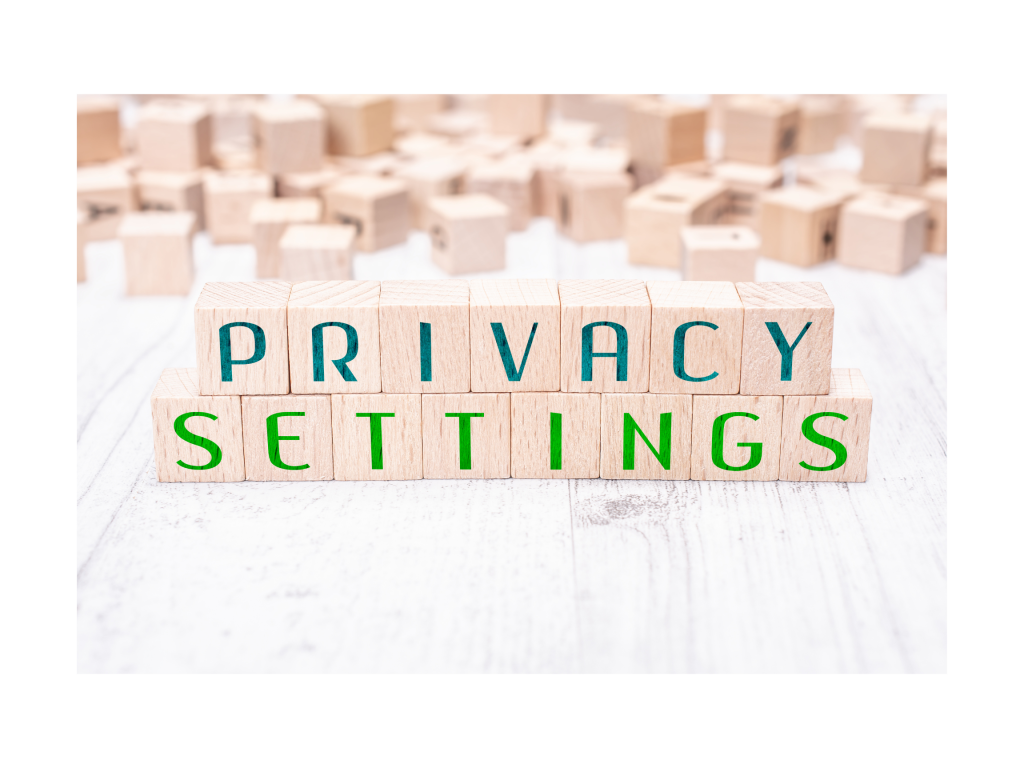Table of Contents
In today’s digital age, our lives are more interconnected than ever before. With just a click, we can share our joys, achievements, and everyday moments with a global audience. Social media platforms, blogs, and vlogs have become our virtual diaries, documenting our journeys and experiences. For many parents, these platforms offer a space to celebrate their children’s milestones, from their first steps to their first day of school.
A cute photo, a funny anecdote, or a proud moment, and within seconds, it’s out there for the world to see. But as we embrace this digital culture, it’s crucial to pause and reflect: What are the implications of sharing our children’s pictures and information online? Are we inadvertently exposing them to risks in our quest to connect and share? This blog post delves into the potential dangers of “sharenting” and offers insights on how to navigate the digital world responsibly, ensuring our children’s safety and privacy.
The Phenomenon of “Sharenting”
Sharing has become second nature, a trend emerged among parents: “Sharenting.” This term, a blend of ‘sharing’ and ‘parenting,’ refers to the practice of parents using social media to share content about their children. This can range from cute baby photos and videos to detailed accounts of parenting styles and daily routines.
A study by Laila Robiatul Adawiah and Y. Rachmawati delves deep into this phenomenon. Their research describes sharenting as a habit where parents disseminate pictures, videos, information, and even their parenting styles for their children on social media platforms. The findings of the study are both enlightening and alarming:
- Widespread Practice: Sharenting has become a common behavior among young parents. The digital age has made it easier than ever to document and share every milestone, from a child’s first word to their first day at school.
- Risks to Children’s Privacy: The study highlights that sharenting can lead to the open spread of a child’s identity on social media. Many parents, in their enthusiasm to share, tend not to protect their children’s privacy. This oversharing can seem like an exploitation of the child’s personal moments.
- Potential for Online Crime: One of the more severe implications of sharenting is the risk of online crime. By sharing detailed information about their children, parents might unintentionally provide data that could be misused by malicious actors.
- Pressure on Children: As these children grow up, they might feel the pressure of their lives being so publicly documented. This can lead to feelings of being constantly watched or judged based on their online persona, which was curated for them without their consent.
The intent behind sharenting is often innocent and stems from a place of pride and love, it’s essential for parents to be aware of the potential risks. As the digital landscape continues to evolve, it’s crucial for parents to stay informed and make conscious decisions about what they choose to share about their children online.

Potential Risks of Sharing Children’s Information Online
While the digital realm offers a plethora of opportunities to connect, share, and document our lives, it also comes with its set of challenges and risks, especially when it involves children. Here are some of the significant dangers associated with sharing children’s information online:
a. Identity Theft and Privacy Violations
- Personal Data Misuse: Every piece of information shared can be a potential goldmine for identity thieves. A name, birthdate, or school can be pieces of a puzzle that, when combined, can lead to identity theft.
- Long-Term Consequences: Once personal data is out there, it’s challenging to retract. This can have lasting implications, especially if the information is used maliciously.
b. Stalking and Online Predators
- Unwanted Attention: Sharing children’s images and personal stories can attract unwanted attention from individuals with malicious intentions.
- Vulnerability: Children, by nature, are vulnerable. Online predators can use the information shared by parents to groom or approach children, posing significant safety risks.
c. Digital Footprint
- Permanence of Online Posts: The internet rarely forgets. Posts, once made, can remain online indefinitely, creating a digital footprint that the child might not consent to when they grow older.
- Future Implications: This digital trail can affect future opportunities, relationships, and personal choices for the child.
d. Psychosocial and Psychological Impact
- Self-Perception: Constant exposure can influence how children perceive themselves, impacting their self-esteem and self-worth.
- Privacy Perception: Growing up with their lives broadcasted can skew a child’s understanding of personal boundaries and privacy.
e. Future Discrimination
- Potential for Bias: Sharing specific aspects of a child’s life, especially sensitive or personal ones, can lead to biases or prejudices in the future.
- Ridicule and Bullying: Content shared can become a source of mockery, leading to bullying or discrimination against the child in their adolescent or adult years.
While it’s natural for parents to want to share their pride and joy with the world, it’s equally essential to understand the potential repercussions of such actions. The digital world is vast and unpredictable, and as guardians of our children’s well-being, it’s our responsibility to tread with caution.
The Ethical Implications of Sharenting
Sharing our children’s lives online raises several moral questions that parents must grapple with:
a. Children’s Consent
- Voiceless Subjects: When parents share photos, videos, or stories of their children, they often do so without obtaining the child’s consent. While a toddler might not have the capacity to give or withhold consent, older children might have strong feelings about their lives being shared online.
- Future Resentment: As children grow and develop their sense of autonomy, they might resent the fact that so much of their life has been shared online without their permission.
b. Right to Privacy
- Inherent Rights: Every individual, regardless of age, has an inherent right to privacy. By sharing details of their children’s lives online, parents might inadvertently be infringing on this right.
- Setting Precedents: When parents share without consideration, they might be setting a precedent for their children that privacy doesn’t matter, potentially influencing their future online behaviors.
c. Guardianship vs. Ownership
- Role of Parents: Parents are guardians of their children, not owners. This distinction is crucial in understanding that children have their own rights, separate from the desires or intentions of their parents.
- Balancing Act: While parents have the responsibility to make decisions for their children, they must balance this role with respecting their child’s individual rights and autonomy.
d. Digital Exploitation
- Monetization and Fame: With the rise of family vlogs and social media influencers, some parents monetize their children’s lives, leading to potential exploitation.
- Blurred Lines: When children become a significant part of a family’s online brand or business, the lines between family life and work can blur, leading to potential conflicts and ethical dilemmas.
The act of sharenting, while often done with love and pride, carries with it a weight of responsibility. Parents must reflect on the ethical implications of their choices and consider the long-term impact on their children. It’s not just about the immediate likes, comments, or shares; it’s about the lasting imprint these decisions leave on a child’s life.

Tips for Safe Sharing
While the digital realm presents numerous challenges, it doesn’t mean parents must abstain from sharing altogether. By adopting a few safety measures and being mindful of their online actions, parents can share responsibly while safeguarding their children’s privacy and well-being. Here are some tips for safe sharing:
a. Limit Personal Information
- Avoid Specifics: Refrain from sharing specific details like full names, exact birthdates, school names, or addresses. These can be used maliciously if fallen into the wrong hands.
- Generalize Events: Instead of stating exact dates or locations for events, consider generalizing. For instance, “Our little one started school this month!” instead of specifying the exact date and school name.
b. Use Privacy Settings
- Restrict Audience: Utilize the privacy settings on social media platforms to limit who can see your posts. Consider sharing only with close friends and family.
- Review Regularly: Privacy policies and settings can change. Regularly review and update your settings to ensure they align with your comfort level.
c. Think Before You Post
- Long-Term Impact: Before sharing, consider the long-term implications of the post. Ask yourself how your child might feel about this content in 5, 10, or 15 years.
- Sensitive Content: Be especially cautious when sharing content that might be sensitive or potentially embarrassing for the child.
d. Educate and Communicate
- Discuss Online Safety: As your children grow, have open conversations about online safety, privacy, and the importance of being cautious.
- Involve Them: For older children, involve them in decisions about what gets posted. Respect their wishes if they prefer not to have certain content shared.
e. Be Wary of Geo-Tagging
- Location Data: Many platforms allow for geo-tagging, which can reveal your exact location. Be cautious about using this feature, especially when posting about your children.
- Check Photos: Sometimes, photos can inadvertently reveal location details, like a house number or school sign. Ensure you’re not unintentionally giving away location data.
Being informed and cautious can go a long way in protecting our loved ones. By adopting these safety measures and fostering open communication, parents can enjoy the benefits of online connectivity while ensuring their children’s safety and privacy remain uncompromised.
While the joy of documenting and celebrating our children’s milestones is undeniable, it’s paramount to recognize the potential pitfalls of such actions. As guardians of our children’s well-being, it’s our duty to ensure that our digital footprints don’t inadvertently harm them. By being informed, cautious, and respectful of their privacy, we can strike a balance that allows us to cherish memories while also safeguarding their futures.
Call to Action:
- Spread Awareness: If you found this article insightful, please consider sharing it with your friends, family, and fellow parents. Together, we can raise awareness and create a safer digital environment for our children.
- Join the Conversation: We’d love to hear your thoughts, experiences, and tips on this topic. Leave a comment below and let’s foster a community discussion on responsible digital parenting.



